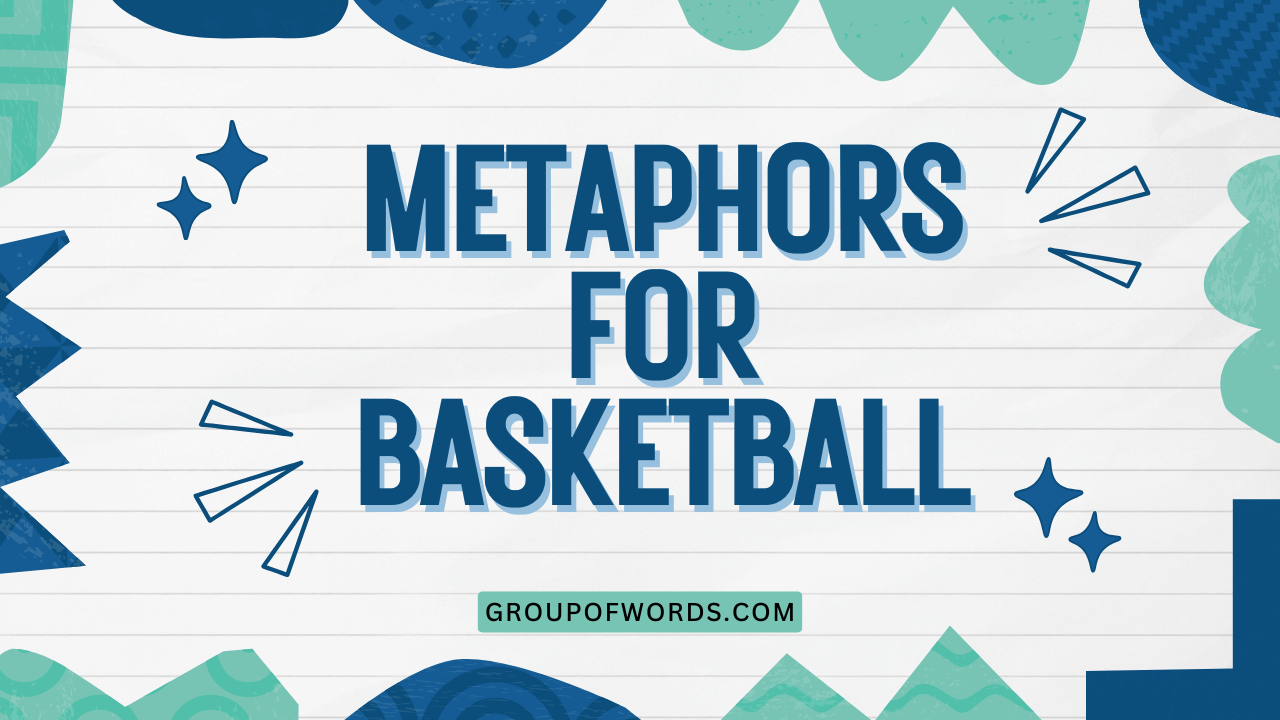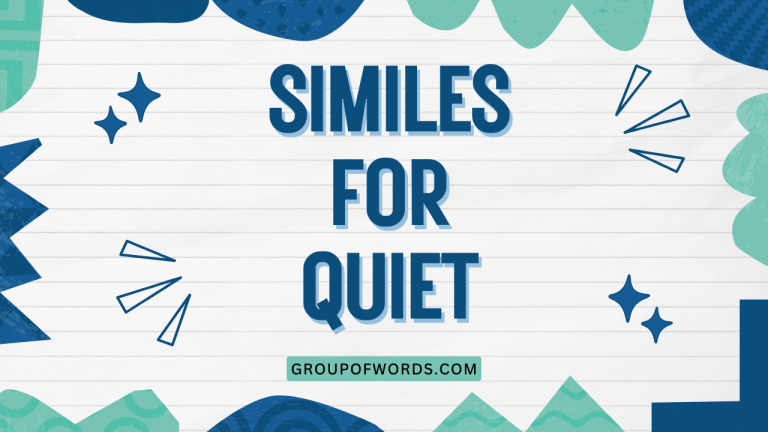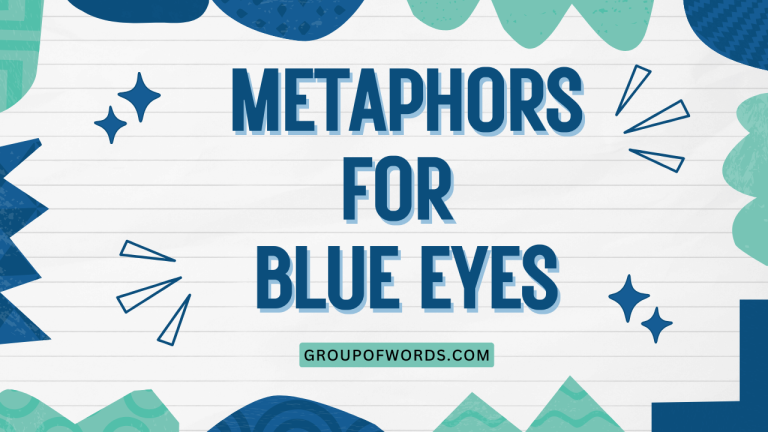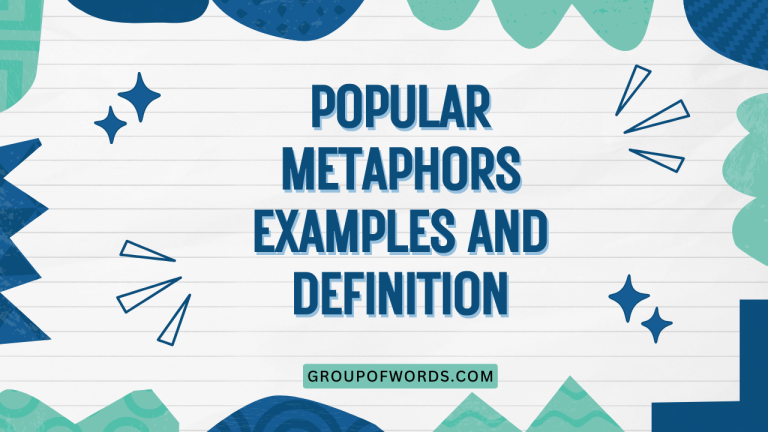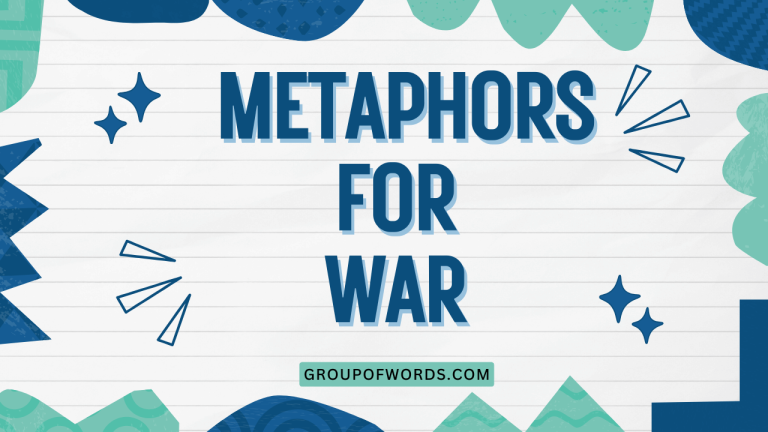Basketball Metaphors: A Comprehensive Guide to Figurative Language on the Court
Metaphors are powerful tools that enrich our language, making it more vivid and engaging. In sports, particularly basketball, metaphors are used to describe the action, strategy, and emotions of the game in ways that resonate with fans and players alike.
Understanding these metaphors not only enhances your appreciation of the sport but also deepens your understanding of how language can be used creatively. This article provides a comprehensive guide to basketball metaphors, exploring their types, usage, and impact.
Whether you’re a basketball enthusiast, an English language learner, or simply someone interested in the intersection of sports and language, this guide will provide valuable insights.
This article will benefit English learners because it showcases how figurative language is used in a specific context, making it easier to grasp the nuances of metaphor. It will also help basketball fans appreciate the artistry of the game by understanding the creative language used to describe it.
This guide will cover everything from basic definitions to advanced usage, including common mistakes and practice exercises to solidify your understanding.
Table of Contents
- Definition of Metaphor
- Structural Breakdown of Basketball Metaphors
- Types and Categories of Basketball Metaphors
- Examples of Basketball Metaphors
- Usage Rules for Basketball Metaphors
- Common Mistakes with Basketball Metaphors
- Practice Exercises
- Advanced Topics in Basketball Metaphors
- Frequently Asked Questions
- Conclusion
Definition of Metaphor
A metaphor is a figure of speech that directly compares two unrelated things without using “like” or “as.” It asserts that one thing *is* another, creating a vivid and often unexpected connection. Metaphors are essential for adding color and depth to language, allowing us to understand abstract concepts in more concrete terms. They are pervasive in everyday speech and are particularly common in sports commentary.
In the context of basketball, metaphors are used to describe the players, the game’s dynamics, and the emotional intensity surrounding the sport. These metaphors often draw comparisons to animals, machines, battles, or even natural disasters, painting a picture of the game that goes beyond simple descriptions of actions.
For example, saying a player is a “scoring machine” doesn’t mean they are literally a machine, but it conveys their consistent and efficient ability to score points. Similarly, describing a defense as a “brick wall” emphasizes its impenetrability.
Understanding these metaphors enhances our comprehension and appreciation of the game.
Structural Breakdown of Basketball Metaphors
Basketball metaphors typically consist of two main elements: the tenor and the vehicle. The tenor is the subject being described (e.g., a player, a team, a strategy), and the vehicle is the object or concept used to describe it (e.g., a machine, a wall, a storm). The effectiveness of a metaphor lies in the connection between the tenor and the vehicle, creating a meaningful and insightful comparison.
Consider the metaphor “He’s a human highlight reel.” Here, “he” (a basketball player) is the tenor, and “human highlight reel” is the vehicle. The metaphor suggests that the player’s actions are consistently exciting and worthy of being featured in a highlight reel, emphasizing their exceptional skill and athleticism.
Another key aspect of metaphor construction is the ground, which refers to the shared characteristics between the tenor and the vehicle. In the “scoring machine” metaphor, the ground is the consistent and efficient output of both the player and the machine. The stronger the ground, the more effective and understandable the metaphor becomes.
Types and Categories of Basketball Metaphors
Basketball metaphors can be categorized based on the aspect of the game they describe. Here are some common categories:
Offensive Metaphors
Offensive metaphors describe scoring, passing, and other aspects of attacking play. They often highlight speed, precision, and power.
Examples include: “He’s a scoring machine,” “The offense is a well-oiled machine,” “He sliced through the defense,” and “The team unleashed a barrage of points.” These metaphors emphasize the effectiveness and intensity of the offensive actions.
Defensive Metaphors
Defensive metaphors describe the act of preventing the opposing team from scoring. They often focus on strength, resilience, and strategy.
Examples include: “The defense was a brick wall,” “They locked down the perimeter,” “He’s a defensive stopper,” and “The team formed an impenetrable shield.” These metaphors emphasize the solidity and effectiveness of the defensive efforts.
Player Performance Metaphors
These metaphors describe individual player skills, attributes, and overall contribution to the game. They often highlight exceptional talent or specific strengths.
Examples include: “He’s a floor general,” “She’s a rebounding beast,” “He’s got ice in his veins,” and “He’s a human highlight reel.” These metaphors emphasize the player’s leadership, dominance, composure, and exciting play.
Game Strategy Metaphors
Game strategy metaphors describe the overall approach and tactics employed by a team or coach. They often involve military or chess-related terms.
Examples include: “They executed the game plan flawlessly,” “The coach drew up a masterpiece,” “They are waging a war on the boards,” and “They are playing chess, not checkers.” These metaphors emphasize the strategic thinking and execution involved in the game.
Emotional Metaphors
Emotional metaphors describe the feelings and intensity experienced by players, coaches, and fans during the game. They often highlight passion, pressure, and determination.
Examples include: “The pressure is a palpable weight,” “He’s playing with fire,” “They are hungry for the win,” and “The crowd erupted like a volcano.” These metaphors emphasize the emotional stakes and intensity of the game.
Examples of Basketball Metaphors
The following tables provide extensive examples of basketball metaphors, categorized by the type of element they describe. Each table contains a variety of metaphors to illustrate the breadth and depth of figurative language used in basketball.
The first table focuses on offensive metaphors, showcasing how offensive actions are described using figurative language. These metaphors often involve speed, precision, and power, painting a vivid picture of the attacking play.
| Metaphor | Explanation |
|---|---|
| He’s a scoring machine. | He consistently scores points, like a machine efficiently produces outputs. |
| The offense is a well-oiled machine. | The offensive plays are executed smoothly and efficiently. |
| He sliced through the defense. | He moved past the defenders easily and quickly. |
| The team unleashed a barrage of points. | The team scored many points in quick succession. |
| He’s a walking bucket. | He is very skilled at scoring. |
| The point guard is the engine of the offense. | The point guard drives and directs the team’s offensive plays. |
| He’s got a hot hand. | He is currently making many shots successfully. |
| They lit up the scoreboard. | They scored a high number of points. |
| He’s a magician with the ball. | He is incredibly skilled and creative with his ball-handling. |
| The offense is clicking on all cylinders. | The offense is performing at its peak efficiency. |
| He’s a human flamethrower. | He is scoring relentlessly and with great intensity. |
| He’s a sniper from beyond the arc. | He is highly accurate at shooting three-pointers. |
| The offense is a symphony of movement. | The offensive plays are coordinated and flowing seamlessly. |
| He’s a scoring savant. | He possesses exceptional and innate scoring ability. |
| They poured in the points. | They scored many points continuously. |
| He’s a offensive juggernaut. | He is an unstoppable force on offense. |
| The offense exploded in the second half. | The offense became highly productive and dynamic after halftime. |
| He’s a offensive weapon. | He is a valuable and potent scorer. |
| They rained down threes. | They made many three-point shots. |
| He’s a offensive catalyst. | He sparks and drives the team’s offensive plays. |
| The offense is a whirlwind of activity. | The offensive plays are fast-paced and energetic. |
| He’s a scoring phenom. | He is an exceptionally talented scorer. |
| They turned the court into a shooting gallery. | They made many shots from various positions on the court. |
| He’s an offensive dynamo. | He is a highly energetic and productive scorer. |
| The offense is a torrent of scoring. | The offense is scoring rapidly and consistently. |
The second table focuses on defensive metaphors, illustrating how defensive actions are described figuratively. These metaphors often involve strength, resilience, and strategy, emphasizing the solidity and effectiveness of the defensive efforts.
| Metaphor | Explanation |
|---|---|
| The defense was a brick wall. | The defense was impenetrable and difficult to score against. |
| They locked down the perimeter. | They effectively prevented the opposing team from scoring from three-point range. |
| He’s a defensive stopper. | He is very good at preventing the opposing team’s best player from scoring. |
| The team formed an impenetrable shield. | The team’s defense was very strong and difficult to break through. |
| He’s a defensive anchor. | He is a key player in the team’s defensive strategy. |
| They clamped down on the opposing team. | They tightened their defense and made it very difficult for the other team to score. |
| He’s a ball hawk. | He is very good at stealing the ball from the opposing team. |
| The defense is airtight. | The defense is very strong and prevents the opposing team from scoring. |
| He’s a menace on defense. | He is a disruptive and challenging player to face on defense. |
| They shut down the paint. | They effectively prevented the opposing team from scoring inside the key. |
| He’s a defensive stalwart. | He is a reliable and consistent defensive player. |
| The defense is a fortress. | The defense is strong and difficult to penetrate. |
| He’s a defensive pitbull. | He is tenacious and aggressive on defense. |
| They suffocated the opposing team’s offense. | They severely limited the opposing team’s ability to score. |
| He’s a defensive general. | He directs and leads the team’s defensive strategy. |
| The defense is a web of traps. | The defense uses strategic traps to disrupt the opposing team’s offense. |
| He’s a defensive wall. | He is a strong and imposing defender. |
| They neutralized the opposing team’s star player. | They effectively limited the impact and scoring of the opposing team’s best player. |
| He’s a defensive disruptor. | He consistently disrupts the opposing team’s offensive plays. |
| The defense is a steel curtain. | The defense is impenetrable and unyielding. |
| He’s a defensive force. | He is a powerful and impactful defensive player. |
| They stifled the opposing team’s attack. | They effectively suppressed the opposing team’s offensive actions. |
| He’s a defensive hawk. | He is sharp and alert on defense, quick to intercept passes and steal the ball. |
| The defense is a vise grip. | The defense is tight and constricting, making it difficult for the opposing team to operate. |
| He’s a defensive powerhouse. | He is a dominant and influential defensive player. |
The third table presents metaphors related to player performance, highlighting individual skills and attributes. These metaphors emphasize exceptional talent, specific strengths, and overall contribution to the game.
| Metaphor | Explanation |
|---|---|
| He’s a floor general. | He is a leader on the court, directing the team’s plays. |
| She’s a rebounding beast. | She is very strong and effective at grabbing rebounds. |
| He’s got ice in his veins. | He remains calm and composed under pressure. |
| He’s a human highlight reel. | His actions are consistently exciting and worthy of being featured in a highlight reel. |
| He’s a triple-double threat. | He is capable of achieving a triple-double (double-digit statistics in three categories). |
| She’s a clutch performer. | She performs well in critical moments of the game. |
| He’s a workhorse on the court. | He works tirelessly and contributes significantly throughout the game. |
| She’s a scoring sensation. | She is an exceptional and exciting scorer. |
| He’s a defensive juggernaut. | He is an unstoppable force on defense. |
| She’s a rebounding machine. | She consistently grabs rebounds, like a machine efficiently produces outputs. |
| He’s a passing wizard. | He is exceptionally skilled and creative at passing the ball. |
| She’s a scoring assassin. | She is highly accurate and effective at scoring points. |
| He’s a rebounding vacuum. | He consistently sucks up rebounds, dominating the boards. |
| She’s a defensive dynamo. | She is a highly energetic and productive defensive player. |
| He’s a triple-threat player. | He excels at scoring, passing, and defending. |
| She’s a clutch shooter. | She consistently makes important shots under pressure. |
| He’s a workhorse rebounder. | He works tirelessly to secure rebounds throughout the game. |
| She’s a scoring prodigy. | She is an exceptionally talented and promising scorer. |
| He’s a defensive anchor. | He is a key player in the team’s defensive strategy, providing stability and strength. |
| She’s a rebounding phenomenon. | She is an exceptionally talented and impactful rebounder. |
| He’s a passing maestro. | He is a highly skilled and orchestrating passer, directing the team’s plays with precision. |
| She’s a scoring marksman. | She is highly accurate and consistent in her scoring abilities. |
| He’s a rebounding magnet. | He consistently attracts rebounds, dominating the boards with his positioning and skill. |
| She’s a defensive stalwart. | She is a reliable and consistent defensive player, providing stability and strength. |
| He’s a triple-double machine. | He consistently achieves triple-doubles, showcasing his all-around skill set. |
The fourth table focuses on game strategy metaphors, describing the overall approach and tactics employed by a team or coach. These metaphors often involve military or chess-related terms, emphasizing the strategic thinking and execution involved in the game.
| Metaphor | Explanation |
|---|---|
| They executed the game plan flawlessly. | The team followed the coach’s strategy perfectly. |
| The coach drew up a masterpiece. | The coach created a brilliant and effective strategy. |
| They are waging a war on the boards. | They are aggressively competing for rebounds. |
| They are playing chess, not checkers. | They are employing a complex and strategic approach to the game. |
| The team is a well-oiled machine. | The team’s plays are executed smoothly and efficiently. |
| They are running a tight ship. | The team is disciplined and well-managed. |
| The coach is a master strategist. | The coach is highly skilled at planning and executing game strategies. |
| They are dictating the tempo of the game. | They are controlling the pace and flow of the game. |
| The game plan is a blueprint for success. | The strategy provides a structured path to achieving victory. |
| They are executing with military precision. | The team’s plays are carried out with exactness and discipline. |
| The coach is a tactical genius. | The coach demonstrates exceptional skill in devising and implementing game tactics. |
| They are employing a strategic offensive. | The team uses a planned and thoughtful approach to their offensive plays. |
| The game plan is a roadmap to victory. | The strategy provides a clear and detailed plan for achieving success. |
| They are playing a calculated game. | The team is making deliberate and strategic decisions throughout the game. |
| The coach is a strategic mastermind. | The coach possesses exceptional skill in devising and implementing complex game strategies. |
| They are executing with surgical precision. | The team’s plays are carried out with extreme accuracy and attention to detail. |
| The game plan is a compass guiding them to success. | The strategy provides direction and guidance towards achieving victory. |
| They are running a strategic defense. | The team employs a planned and thoughtful approach to their defensive plays. |
| The coach is a strategic architect. | The coach designs and builds complex and effective game strategies. |
| They are playing a game of cat and mouse. | The teams are engaging in a strategic and tactical battle, each trying to outmaneuver the other. |
| The coach is a mastermind behind the scenes. | The coach is the key strategic thinker, orchestrating the team’s success from behind the bench. |
| They are executing with clockwork precision. | The team’s plays are carried out with perfect timing and coordination. |
| The game plan is a strategic playbook. | The strategy provides a comprehensive set of plays and tactics for the team to use. |
| They are playing a game of attrition. | The teams are engaged in a long and grueling battle, each trying to wear down the other. |
| The coach is a puppet master on the sidelines. | The coach is controlling the team’s actions and strategies from the sidelines. |
The fifth table focuses on emotional metaphors, describing the feelings and intensity experienced by players, coaches, and fans during the game. These metaphors often highlight passion, pressure, and determination, adding depth to the narrative of the game.
| Metaphor | Explanation |
|---|---|
| The pressure is a palpable weight. | The tension and stress are intense and noticeable. |
| He’s playing with fire. | He is playing with great passion and intensity. |
| They are hungry for the win. | They are very determined and eager to win. |
| The crowd erupted like a volcano. | The crowd reacted with sudden and intense excitement. |
| He’s fueled by passion. | He is driven by strong emotion and enthusiasm. |
| They are battling with heart and soul. | They are playing with great effort and determination. |
| He’s a pressure cooker. | He is under immense stress and tension. |
| The atmosphere is electric. | The environment is filled with excitement and energy. |
| They are fighting tooth and nail. | They are competing fiercely and relentlessly. |
| He’s a man on a mission. | He is highly focused and determined to achieve his goal. |
| The tension is a thick fog. | The stress and uncertainty are heavy and pervasive. |
| He’s playing with a chip on his shoulder. | He is motivated by a sense of grievance or determination to prove himself. |
| They are showcasing their grit and determination. | They are displaying their resilience and unwavering commitment. |
| He’s a volcano of emotion. | He is filled with intense feelings that are ready to erupt. |
| The crowd is a roaring ocean. | The crowd’s energy and noise are overwhelming and powerful. |
| They are fueled by a burning desire to win. | They are driven by an intense and passionate longing for victory. |
| He’s a pressure valve. | He provides a release for the team’s stress and tension. |
| The atmosphere is charged with anticipation. | The environment is filled with excitement and expectation. |
| They are giving it their all, leaving nothing on the court. | They are exerting maximum effort and dedication. |
| He’s a warrior on the court. | He is courageous and determined in his play. |
| The tension is a palpable force. | The stress and strain are intense and noticeable. |
| He’s playing with a fire in his eyes. | He is showing intense passion and determination. |
| They are displaying unwavering resolve. | They are showing steadfast determination and commitment. |
| He’s a lightning rod for emotion. | He attracts and channels intense feelings. |
| The crowd is a sea of energy. | The crowd’s collective energy is vast and powerful. |
Usage Rules for Basketball Metaphors
When using basketball metaphors, it’s important to ensure they are appropriate and effective. Here are some key usage rules:
- Clarity: The metaphor should be easily understood by the audience. Avoid obscure or overly complex comparisons.
- Relevance: The metaphor should be relevant to the context of the game or situation being described.
- Originality: While some metaphors are common, try to use creative and original comparisons to make your language more engaging.
- Consistency: Avoid mixing metaphors within the same sentence or paragraph, as this can create confusion.
- Appropriateness: Ensure the metaphor is appropriate for the tone and style of the communication. Avoid using overly aggressive or offensive metaphors.
For example, instead of saying “He’s a fish out of water,” which is a generic metaphor, you could say “He’s like a rookie trying to guard LeBron,” which is more specific and relevant to basketball.
Common Mistakes with Basketball Metaphors
Using metaphors effectively requires careful attention to detail. Here are some common mistakes to avoid:
- Mixed Metaphors: Combining two or more inconsistent metaphors.
- Clichés: Overusing common and unoriginal metaphors.
- Inappropriate Metaphors: Using metaphors that are not relevant or suitable for the context.
- Overly Complex Metaphors: Using metaphors that are too difficult to understand.
Here are some examples of common mistakes and their corrections:
| Incorrect | Correct | Explanation |
|---|---|---|
| He’s a scoring machine who’s also a fish out of water. | He’s a scoring machine who dominates the court. | Avoid mixing metaphors; focus on a single, consistent comparison. |
| The defense was rock solid. | The defense was an impenetrable wall. | Avoid clichés; use more original and descriptive comparisons. |
| He’s a financial wizard on the court. | He’s a floor general on the court. | Ensure the metaphor is relevant to basketball. |
| The team’s strategy was a complex algorithm wrapped in a riddle inside an enigma. | The team’s strategy was intricate and well-planned. | Avoid overly complex metaphors; keep it simple and clear. |
Practice Exercises
Test your understanding of basketball metaphors with these practice exercises. Identify the metaphors used in each sentence and explain their meaning.
Exercise 1: Identifying Metaphors
| Question | Answer |
|---|---|
| 1. The point guard is the engine of the team. | Metaphor: “Engine.” Explanation: The point guard drives and powers the team’s offense. |
| 2. The defense was a steel curtain, impenetrable and unyielding. | Metaphor: “Steel curtain.” Explanation: The defense was very strong and difficult to break through. |
| 3. He’s got ice in his veins; nothing fazes him under pressure. | Metaphor: “Ice in his veins.” Explanation: He remains calm and composed in critical moments. |
| 4. The team unleashed a barrage of three-pointers in the fourth quarter. | Metaphor: “Barrage.” Explanation: The team made many three-point shots in quick succession. |
| 5. She’s a rebounding beast, dominating the boards every game. | Metaphor: “Rebounding beast.” Explanation: She is very strong and effective at grabbing rebounds. |
| 6. The coach drew up a masterpiece, leading the team to victory. | Metaphor: “Masterpiece.” Explanation: The coach created a brilliant and effective strategy. |
| 7. He’s a walking bucket; he can score from anywhere on the court. | Metaphor: “Walking bucket.” Explanation: He is very skilled at scoring. |
| 8. The crowd erupted like a volcano when he made the game-winning shot. | Metaphor: “Volcano.” Explanation: The crowd reacted with sudden and intense excitement. |
| 9. They are waging a war on the boards, fighting for every rebound. | Metaphor: “War.” Explanation: They are aggressively competing for rebounds. |
| 10. He’s a human highlight reel, always making spectacular plays. | Metaphor: “Human highlight reel.” Explanation: His actions are consistently exciting and worthy of being featured in a highlight reel. |
Exercise 2: Creating Metaphors
Complete the following sentences by adding an appropriate metaphor.
| Question | Answer |
|---|---|
| 1. The team’s offense was so smooth, it was like __________. | Possible Answer: a well-oiled machine. |
| 2. His defensive skills were so strong, he was a __________. | Possible Answer: brick wall. |
| 3. She moved through the defense like a __________. | Possible Answer: hot knife through butter. |
| 4. The crowd’s energy was so intense, it felt like __________. | Possible Answer: a roaring ocean. |
| 5. He scored so many points, he was a __________. | Possible Answer: scoring machine. |
| 6. The coach’s strategy was so brilliant, it was a __________. | Possible Answer: masterpiece. |
| 7. The pressure on the players was __________. | Possible Answer: a palpable weight. |
| 8. He played with such determination, he was a __________. | Possible Answer: man on a mission. |
| 9. Her rebounding skills were so dominant, she was a __________. | Possible Answer: rebounding beast. |
| 10. The atmosphere in the arena was __________. | Possible Answer: electric. |
Advanced Topics in Basketball Metaphors
For advanced learners, exploring the nuances of extended metaphors and their cultural significance can provide deeper insights. An extended metaphor is a metaphor that is developed over several lines or even throughout an entire piece of writing. In basketball commentary, an extended metaphor might involve comparing a team’s journey through the playoffs to a long and arduous voyage, with each game representing a new challenge and each victory bringing them closer to their ultimate destination.
The cultural significance of basketball metaphors also varies across different regions and communities. Certain metaphors may resonate more strongly with specific audiences due to shared cultural references or experiences.
For example, a metaphor comparing a player’s resilience to a local historical figure might be particularly meaningful to fans in that region.
Analyzing the use of metaphors in famous basketball speeches or interviews can also provide valuable insights into how language is used to motivate, inspire, and connect with others. Consider the impact of a coach using a metaphor to galvanize their team before a crucial game, or a player using a metaphor to express their determination to overcome adversity.
Frequently Asked Questions
Here are some frequently asked questions about basketball metaphors:
- What is the difference between a metaphor and a simile?
A metaphor directly compares two things without using “like” or “as,” while a simile uses “like” or “as” to make a comparison. For example, “He’s a scoring machine” (metaphor) vs. “He’s as consistent as a scoring machine” (simile).
- Why are metaphors so common in sports commentary?
Metaphors add color and excitement to the description of the game, making it more engaging and relatable for fans. They also help to convey complex ideas and emotions in a concise and memorable way.
- How can I improve my understanding of basketball metaphors?
Pay attention to how commentators and writers use metaphors in their descriptions of the game. Read articles, listen to podcasts, and watch games with a focus on identifying and interpreting the metaphors used.
- Are there any negative aspects to using metaphors?
Metaphors can sometimes oversimplify complex situations or perpetuate stereotypes. It’s important to use them thoughtfully and be aware of their potential impact.
Conclusion
Basketball metaphors are a vibrant and integral part of the sport’s language, enriching our understanding and appreciation of the game. By understanding the structure, types, and usage rules of these metaphors, you can enhance your ability to communicate effectively about basketball and deepen your connection to the sport.
Whether you are a player, a fan, or an English language learner, mastering the art of basketball metaphors will undoubtedly elevate your engagement with the game.
